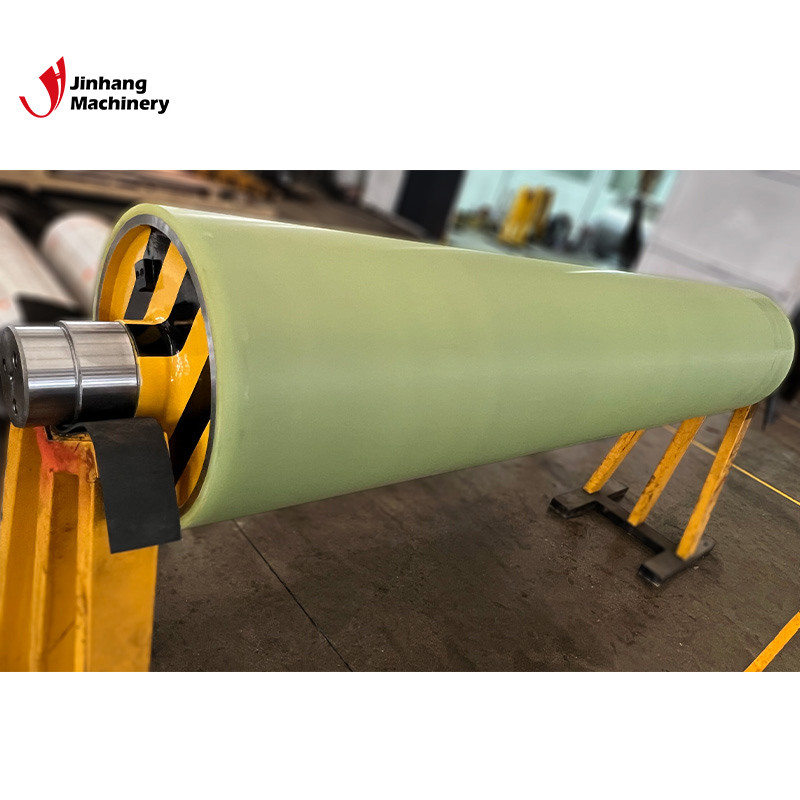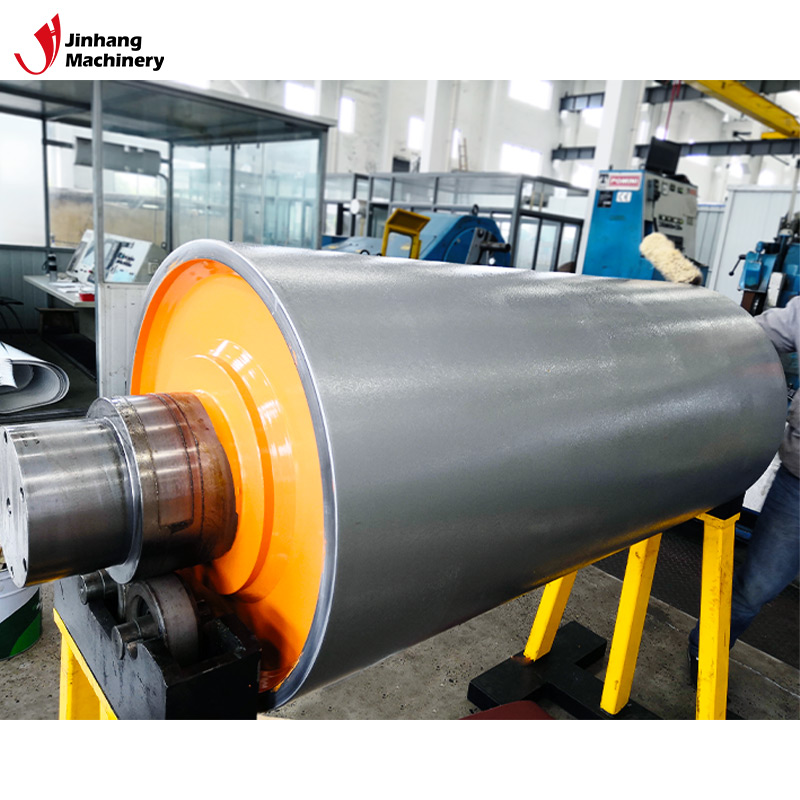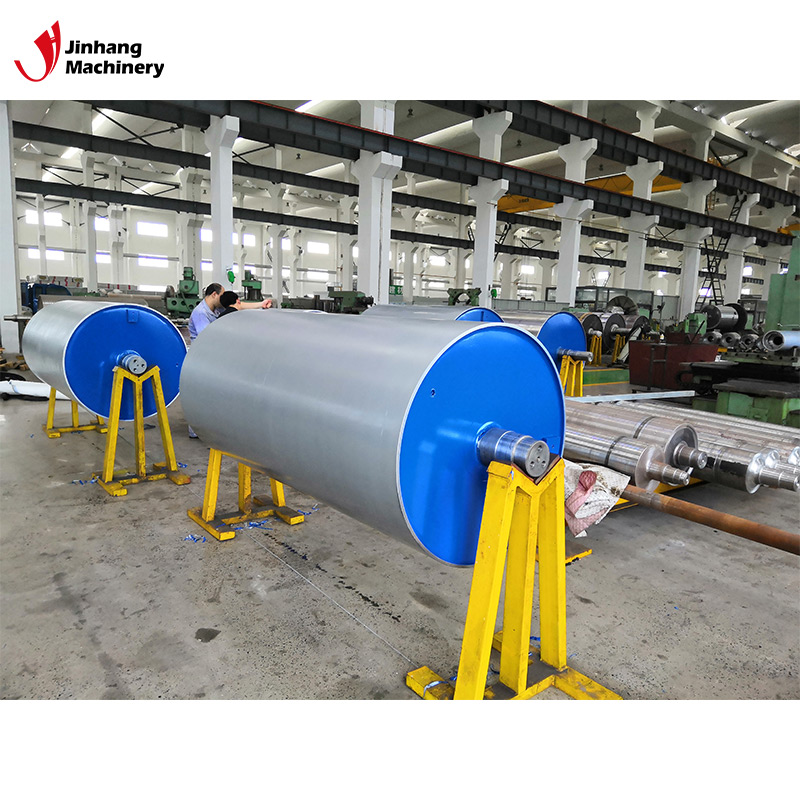What are the defects of rubber rollers?
Rubber rollers play a vital role in many industrial fields and are widely used in printing, textile, papermaking, packaging and other industries. However, although rubber rollers perform well in various industrial operations, various defects and problems are inevitable during use. These defects not only affect production efficiency, but may also lead to serious consequences such as production line shutdown and product quality degradation.
This article will explore in depth several common defects of rubber rollers in use, and analyze the causes of these problems and their impact on the production process.

What are the defects of rubber rollers?
The defects of rubber rollers can be divided into two categories: roller body and rubber surface. Among them, damage to the rubber surface is the most common and has the greatest impact on production. The following are several common defects of rubber rollers during use:
Damage to the roller body or rubber surface
Damage to the roller body or rubber surface is one of the most common defects of rubber rollers, mainly manifested as cracks, cracks, blistering, and depressions on the rubber surface. These damages are usually caused by long-term excessive pressure on the rubber roller, frequent mechanical shocks, or chemical corrosion. Once the rubber surface is damaged, the performance of the roller will be greatly reduced, which may cause the printing, coating and other processes to fail to proceed normally, and ultimately affect the quality and production efficiency of the product.
Accumulation of ink or ink residue impurities
In the printing industry, rubber rollers often accumulate ink or ink residue impurities during use. Over time, these deposits will gradually harden and form spots or lumps that are difficult to remove. This will not only affect the surface finish of the rubber roller, but also lead to a decline in printing quality, color difference, uneven ink marks and other problems. In addition, ink residue accumulation may also cause imbalance of the rubber roller, resulting in vibration during machine operation, further accelerating the wear of the rubber roller.
Thermal expansion
Rubber materials have obvious thermal expansion and contraction characteristics. In high temperature environments, rubber rollers will expand due to heat. This expansion will cause the diameter of the rubber roller to increase, thereby affecting its matching accuracy with other components, and may eventually cause problems such as production line jams and material deviations. Especially in processes that require high-temperature operation such as papermaking and printing, the thermal expansion of rubber rollers is often an important factor leading to production abnormalities.
Core dehulling
Core dehulling is the phenomenon of separation between the core and the rubber layer in the rubber roller. This defect is usually caused by insufficient adhesive performance, loose rubber and core bonding, or rubber aging. When the core dehulling phenomenon occurs, the rubber roller will lose its due rigidity and stability and cannot continue to bear the workload. In severe cases, it may even cause the rubber roller to fail completely and must be replaced with a new roller.
Wear and aging
The wear and aging of the rubber roller are defects that gradually appear with the increase of usage time. Under long-term mechanical friction, chemical corrosion and environmental influences, rubber materials will gradually show aging phenomena such as hardening, cracking, and wear. The surface of the worn rubber roller is no longer smooth, and defects such as grooves and cracks may appear, which will affect the production quality. The aging of the rubber roller will reduce its elasticity and wear resistance, resulting in a shortened service life of the roller.
Surface scratches
The surface scratches of the rubber roller are caused by scratches from external objects or improper operation. Although this defect does not seem serious on the surface, it will have a significant impact on the performance of the rubber roller. Surface scratches can lead to uneven pressure distribution of rubber rollers, affecting the quality of processes such as lamination and coating. In addition, impurities are easily accumulated in the scratched parts, further aggravating the wear of rubber rollers.
What are the causes of rubber roller defects?
Understanding the causes of rubber roller defects is crucial to preventing and solving these problems. The following are several main reasons for the above defects in rubber rollers:
Harsh operating environment
The operating environment of rubber rollers is often challenging, such as high temperature, high humidity, chemical corrosion, etc. These harsh environments will accelerate the aging and wear of rubber rollers. For example, in a high temperature environment, rubber rollers are prone to thermal expansion or aging; in a chemically corrosive environment, the rubber layer may be corroded, resulting in damage to the rubber surface.
Improper operation
Improper operation is one of the important factors that lead to damage to rubber rollers. Common operating errors include applying excessive pressure, using inappropriate cleaning agents, and bumping the rubber roller during loading and unloading. These operating errors will directly lead to surface scratches, cracks on the rubber surface, or increased wear of the rubber roller.
Untimely maintenance
Rubber rollers need to be cleaned, lubricated and repaired regularly during use. However, many companies often ignore this in actual operation, resulting in a large amount of impurities such as ink and ink residues accumulating on the surface of the rubber roller, which cannot be cleaned for a long time, and ultimately affects its service life and performance.
Material quality issues
The quality of the rubber roller is closely related to the materials used. If the wear resistance, heat resistance, chemical corrosion resistance and other indicators of the rubber material do not meet the standards, the rubber roller is more likely to have defects such as wear, aging, and cracking during use. In addition, the quality of the adhesive also directly affects the bonding strength between the iron core and the rubber layer. Poor-quality adhesives can cause the iron core to peel off.
Irrational design
The design of the rubber roller has an important influence on its performance. If the roller body is not designed reasonably, such as the roller body is too long, the diameter is too small, and the surface hardness is not appropriate, the rubber roller will expand due to heat, uneven pressure, and surface wear during use. Irrational design may also cause improper coordination between the rubber roller and other equipment components, affecting the overall production efficiency.

What impact will the defects of the rubber roller have?
The impact of rubber roller defects on the production process is significant and multifaceted. Here are some of the main consequences that these defects may cause:
Decrease in production efficiency
The defects of rubber rollers will directly lead to a decrease in production efficiency. For example, problems such as damage to the rubber surface, ink accumulation, and thermal expansion can cause jamming, material deviation, unclear printing, etc. in the production process, which in turn causes problems such as production line shutdown and rework, seriously affecting production efficiency.
Decrease in product quality
The surface quality of the rubber roller directly affects the processing effect of the product. Problems such as surface scratches, ink residue accumulation, and rubber surface cracks can cause product defects, such as color difference in printed products and uneven coating. These quality problems will not only affect the market competitiveness of the product, but may also lead to customer complaints and returns, causing economic losses to the company.
Equipment damage
The defects of rubber rollers may also cause damage to other equipment. For example, the phenomenon of core shelling can cause the rubber roller to lose balance during operation, thereby aggravating the vibration and wear of the equipment and shortening the service life of the equipment. The phenomenon of thermal expansion may also increase the friction between the rubber roller and other components, aggravating the damage of the equipment.

What are the measures to prevent and solve rubber roller defects?
In order to reduce the impact of rubber roller defects on production, enterprises can take the following preventive and remedial measures:
Improve the use environment
By improving the use environment of rubber rollers, their service life can be effectively extended. For example, in a high temperature environment, cooling measures can be taken or high temperature resistant rubber materials can be used; in a chemical corrosion environment, chemical corrosion resistant rubber materials can be selected, and the surface of the rubber roller should be cleaned regularly to prevent the accumulation of chemical substances.
Strengthen operation training
Operators should receive adequate training and master the correct operation methods and precautions to avoid damage to the rubber roller due to improper operation. Especially during loading and unloading, cleaning and maintenance, operators should avoid bumping and scratching the rubber roller.
Regular maintenance
Enterprises should formulate regular maintenance plans to regularly clean, lubricate and overhaul rubber rollers. By promptly removing impurities such as ink and ink residue on the surface of the rubber roller, these impurities can be effectively prevented from causing damage to the surface of the rubber roller. In addition, regularly check the condition of the rubber surface and the roller body, and deal with problems in a timely manner to avoid the expansion of the problem.
Choose high-quality materials
When purchasing rubber rollers, you should choose rubber materials and adhesives with reliable quality to ensure that their wear resistance, heat resistance and chemical corrosion resistance meet the requirements. At the same time, according to the needs of the production process, the appropriate surface hardness and design parameters should be selected to ensure the performance of the rubber roller.
Optimized design
In the design stage of the rubber roller, the requirements of the production process and the characteristics of the use environment should be fully considered, and the length, diameter and surface hardness of the roller body should be reasonably designed. In addition, according to the needs of different processes, appropriate rubber materials and structural designs should be selected to ensure the durability and stability of the rubber roller.
Conclusion
Rubber rollers play an indispensable role in industrial production, and their performance directly affects production efficiency and product quality. However, due to harsh use environment, improper operation, material quality problems and other reasons, rubber rollers often have various defects during use. By understanding the causes of these defects and their impact on production, enterprises can take targeted prevention and solution measures to effectively increase the service life of rubber rollers and reduce production losses caused by defects, thereby improving overall production efficiency and product quality.
